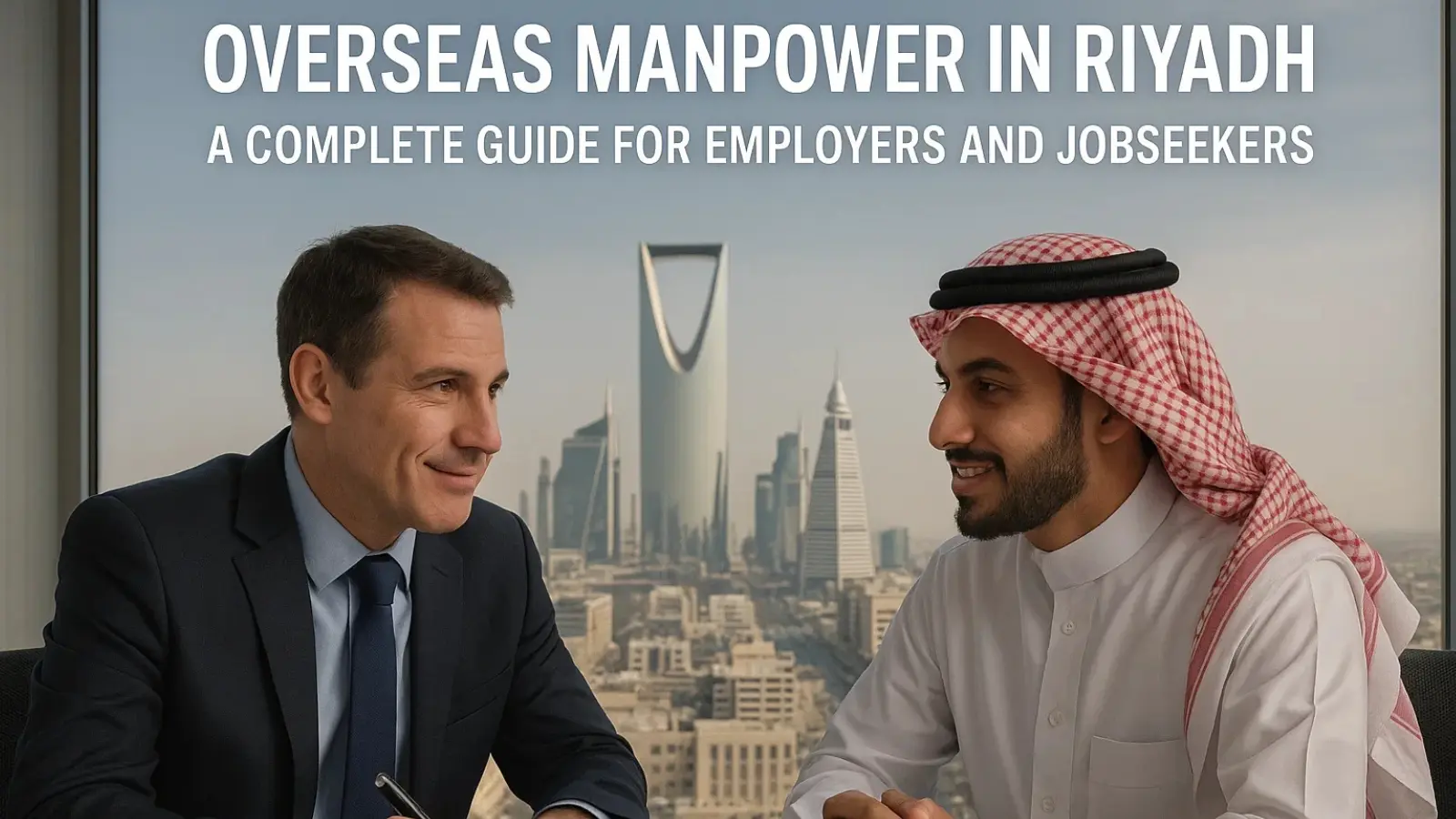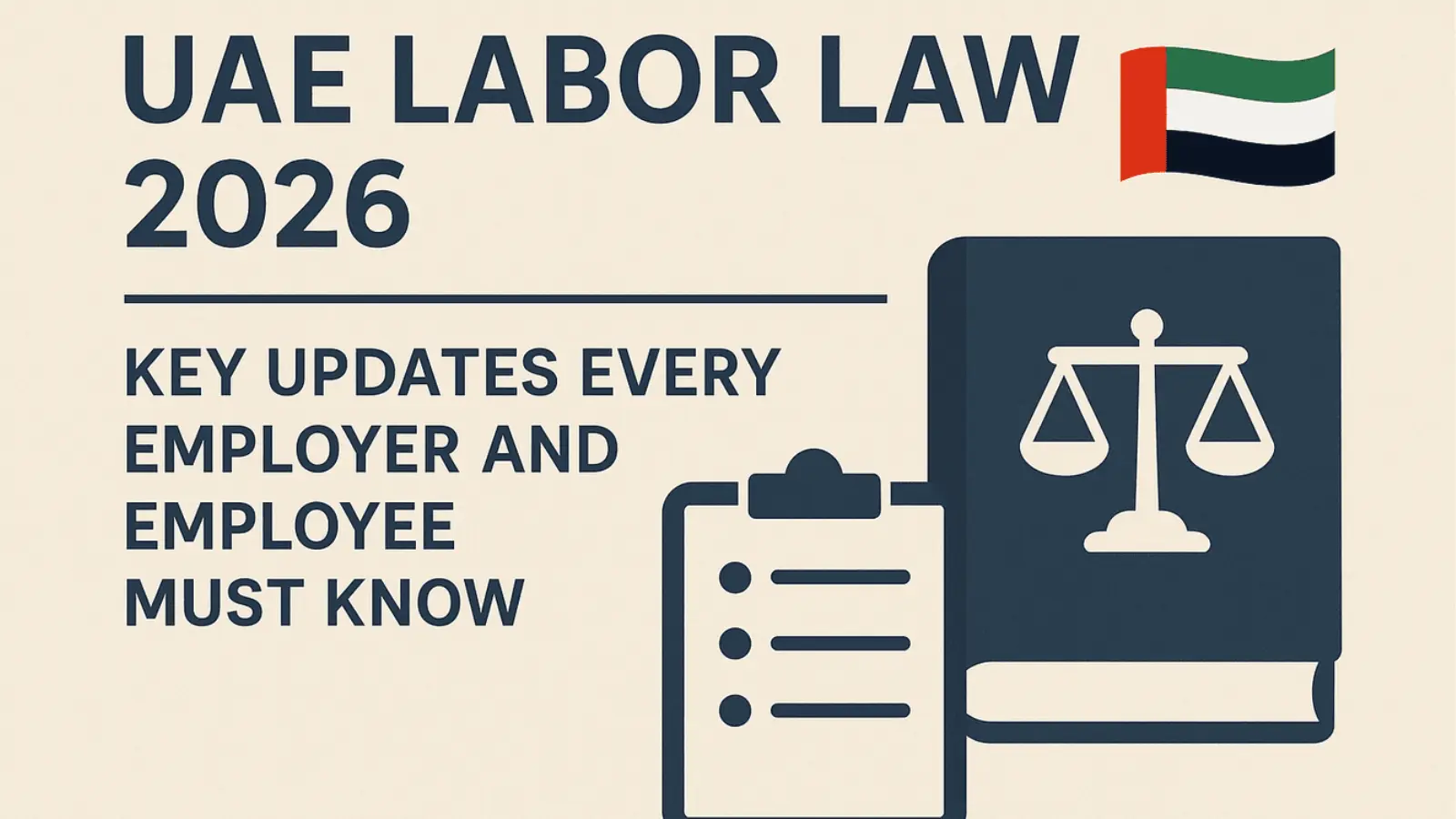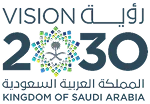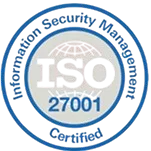Have you ever hired someone from overseas, only to find out they used fake details to get the job? This happens more often than you think, especially with remote work on the rise.
Employers face big risks like money loss from fraud, damage to their company's name, and even legal issues if they hire the wrong person. Poor checks can lead to low work quality or data leaks, hurting your team and business goals.
But with the right steps, you can spot fraud early and build a strong team. This guide shows simple ways to check identities using ID reviews, biometrics, and AI tools, helping you hire safely from anywhere.
Why Identity Checks Matter for Remote and Overseas Hires
Remote hiring lets you tap into global talent, but it brings challenges. Without in-person meetings, it's easier for fraudsters to use fake names or stolen details.
Reports show a big rise in remote job scams, with AI helping bad actors create false profiles. This can lead to hiring "ghost workers" who don't show up or people holding multiple jobs secretly. For overseas recruits, differences in laws and cultures add more risks.
Poor checks might break rules like data protection laws, leading to fines. On the flip side, strong verifications build trust, speed up hiring, and improve team quality. They also help avoid bias by focusing on facts.
We are one of the best recruitment agencies in Pakistan with most reliable and trusted manpower services. Our agency recruits from general labor to executive positions with ease. Partnering with us can add an extra layer of checks, as we handle initial verifications for you.
Basic ID Check Methods to Start With
Begin with straightforward ways to confirm who someone is. These are low-cost and easy to set up.
- Government ID Verification: Ask candidates to upload or show IDs like passports during video calls. Check for signs of fakes, such as wrong fonts or blurry images. Tools can scan barcodes to confirm they're real.
- Social Security or National ID Trace: For countries with these, run a trace to match personal info like address and birth date. This spots if details don't line up.
- Reference and Background Checks: Call past employers and schools directly. Don't just trust provided contacts; find official ones online.
- E-Signatures and Forms: Use digital signatures on applications. Verify them in real time during interviews to ensure the same person is involved.
These steps work well for initial screening and can be done without fancy tech.

How Biometrics Make Verification Stronger
Biometrics use unique body traits that are hard to fake. They're great for remote setups since they work over phones or computers.
- Facial Recognition: Candidates take a selfie with liveness checks, like blinking or turning their head. The system matches it to their ID photo and sometimes official records. This stops photo swaps or video tricks.
- Fingerprint Scanning: Use apps that capture prints via camera. It's contactless and quick, adding a layer beyond documents.
- Voice or Iris Scans: For high-security roles, these check voice patterns or eye details. They're less common but very accurate.
- Implementation Tips: Integrate with HR software for automatic checks. Tools handle over 10,000 ID types from many countries, perfect for overseas hires.
AI Tools for Spotting and Stopping Fraud
AI takes verification to the next level by analyzing data humans might miss. It's key for fighting advanced fraud like deepfakes.
- Behavioral Analysis: AI watches interview videos for odd eye movements, pauses, or coached answers. It flags if someone might be reading from a script.
- Document Scanning: Checks papers for tampering, like changed dates or fake seals. It uses patterns to spot forgeries fast.
- Deepfake Detection: Looks at video for unnatural face moves or lighting. This is vital as AI-made videos grow.
- Real-Time Monitoring: AI cross-checks info across databases, alerting to mismatches like overlapping jobs.
- Popular Tools: Try services that scan emails and phones quickly or use AI agents for interview checks. Some validate identity and behavior before hiring.
AI reduces fraud by up to 90% in some cases, but always have human review for big decisions.
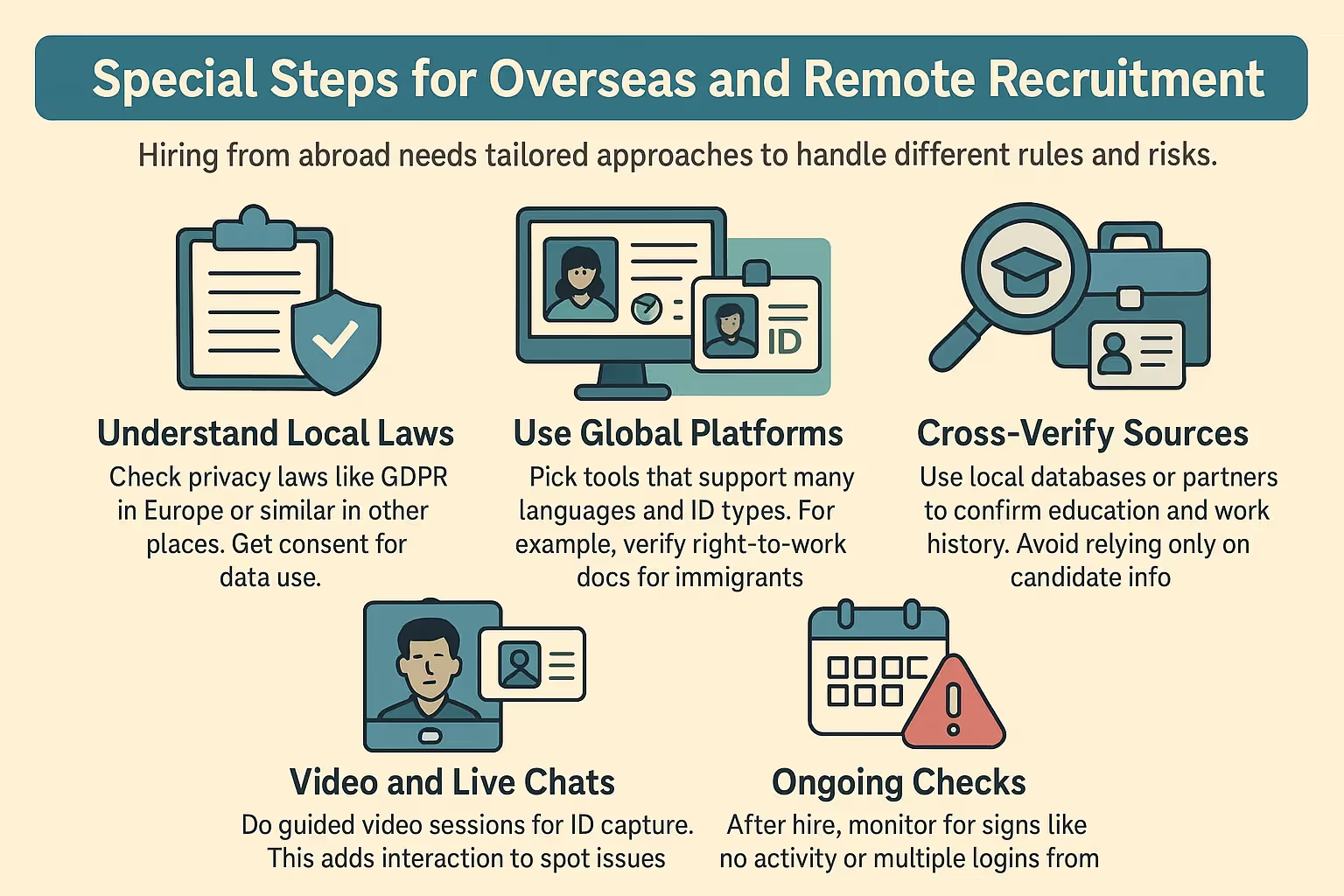
Special Steps for Overseas and Remote Recruitment
Hiring from abroad needs tailored approaches to handle different rules and risks.
- Understand Local Laws: Check privacy laws like GDPR in Europe or similar in other places. Get consent for data use.
- Use Global Platforms: Pick tools that support many languages and ID types. For example, verify right-to-work docs for immigrants.
- Cross-Verify Sources: Use local databases or partners to confirm education and work history. Avoid relying only on candidate info.
- Video and Live Chats: Do guided video sessions for ID capture. This adds interaction to spot issues.
- Ongoing Checks: After hire, monitor for signs like no activity or multiple logins from far places.
Best Practices to Build a Solid Process
To make your verification work well, follow these tips.
- Mix Methods: Don't use just one way; combine IDs, biometrics, and AI for full protection.
- Train Your Team: Teach recruiters fraud signs and tool use. Run practice sessions.
- Stay Compliant: Keep up with laws and audit your process yearly.
- Use Third-Party Help: Work with agencies or services for extra checks. They handle complex overseas verifications.
- Monitor and Update: Watch for new fraud types, like AI profiles, and adjust tools.
- Build Trust: Tell candidates why you check and how it protects everyone.
By following this guide, you can hire confidently, reducing fraud and finding great talent from anywhere.
